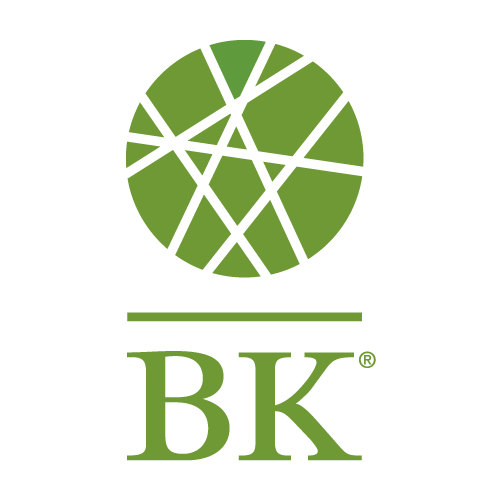I first found out about B Corporations while baking cookies. The flour I was using—King Arthur unbleached all-purpose flour—had a Certified B Corporation logo on the side of the package. “That seems silly,” I thought. “Wouldn’t you want to be an A Corporation and not a B Corporation?” The carton of eggs I was using was rated AA. I was obviously missing something.

In this adapted excerpt from The B Corp Handbook, author Ryan Honeyman speaks freely about his journey into a confronting uncomfortable truths about identity, privilege, and power and the importance of embracing a holistic understanding of diversity, equity & inclusion. He details the critical new additions that can better connect people and ideas to create a world that works for all.
An online search revealed that the B logo was not a scarlet letter for second rate baking product. B Corporations, I found, were part of a dynamic and exciting movement to redefine success in business by using their innovation, speed, and capacity for growth not only to make money but also to help alleviate poverty, build stronger communities, restore the environment, and inspire us to work for a higher purpose. The B stands for “benefit,” and as a community, B Corporations want to build a new sector of the economy in which the race to the top isn’t to be the best in the world but to be the best for the world.
Since my initial discovery, I have watched the B Corp movement grow to thousands of businesses in over sixty countries. In addition to King Arthur Flour, well-known B Corps include Ben & Jerry’s, Danone North America, Eileen Fisher, Kickstarter, Laureate Education, Method, Natura, Patagonia, Seventh Generation, and Triodos Bank. Thought leaders such as former President Bill Clinton and Robert Shiller, the winner of the Nobel Prize in economics, have taken an interest in the B Corp movement. Inc. Magazine has called B Corp certification “the highest standard for socially responsible businesses,” and the New York Times has said, “B Corp provides what is lacking elsewhere: proof.”
You ought to look at these B Corporations… We’ve got to get back to a stakeholder society that doesn’t give one class of stakeholders an inordinate advantage over others.
- Bill Clinton, former president of the United States
Why We Need a New B Corp Handbook
I originally decided to write this book because many business owners and CEOs are intrigued and excited by the idea of B Corporations but there was not a single step-by-step resource that could explain the what, why, and how of the B Corp movement. There was a need for a book that was practical and hands-on, a comprehensive guide for those interested in using business as a force for good.
The main focus of this book is the Certified B Corporation, not the legal entity known as a benefit corporation. This book focuses on the Certified B Corporation because this certification (and the B Impact Assessment, the free online tool for improving a company’s social and environmental performance) is available to any business in the world, regardless of existing legal structure, size, or location of incorporation. This second edition of The B Corp Handbook, which I have coauthored with Dr. Tiffany Jana of TMI Consulting, updates the core content from the first edition of the book while adding Dr. Jana’s expertise on diversity, equity, and building a more inclusive economy.
A lot has changed for me since 2014, when the first edition of this book was written. I now have two kids, a girl and a boy. Any parent reading this knows that something changes when you have kids. For me, having a girl made me viscerally aware of the many systemic barriers she will face in this world. It made me feel sad, angry, and helpless. Her birth caused the first in a series of deeper revelations. For example, many ideas that I was intellectually supportive of—like women’s empowerment—suddenly became personal and real.
In addition to being a new father, this shift inside of me was accelerated by watching more cell phone videos of the police shooting unarmed black men, by Indigenous-led protests against the Dakota Access Pipeline, by the power of the #MeToo movement, or by immigrant children being forcibly separated from their parents just for seeking a better life in the United States. The confluence of these events reordered my internal list of personal and professional priorities. Diversity, equity, and inclusion (DEI) shifted from one of many issues I care about to my top priority.
We Need to Talk about Diversity, Equity, & Inclusion (DEI)
The second edition of The B Corp Handbook is a lot different than the first. Some readers may have mixed reactions to the addition of so much content around DEI. You might think, “I wanted to read a straightforward book about B Corps, and you are blindsiding me with all of this DEI content. It feels like you are forcing this topic on readers when it is just one of many priorities. If I wanted to read a book about diversity, I would get one.”
If you find yourself thinking along these lines, I understand the reaction. I may have thought the exact same thing before 2014. What I have learned over the past few years, however, is that there is no such thing as a conversation about DEI and a separate conversation about business as a force for good. They are the same conversation. Siloing DEI into something separate is one of the main barriers facing our movement to create a more equitable society.
Another thing I have learned is that, as a cisgender (that is, my gender identity matches the sex I was assigned at birth), non-disabled, straight, white male who is a U.S. citizen, it is the privilege of people like me to not think about DEI. We can mostly ignore it, or expect people of color (or other historically marginalized groups) to figure it out, or we can indefinitely kick the conversation down the road without any apparent negative repercussions. It should not be the burden of people of color, women, or other marginalized groups to educate folks with privilege about institutional racism, institutional sexism, and other forms of systemic bias. One reason privileged people like me avoid this topic is that many of us feel like we don’t know where to start—even if we are interested in addressing systemic bias. Another reason is that conversations about DEI, especially about race, often bring up feelings of shame, guilt, hopelessness, anger, and sadness. I have taken solace in the advice I have received from racial justice educators and social justice activists over the last few years.
As a white person (or for any person, for that matter), the term “white supremacy” is often jarring and cringeworthy. It can conjure up images of neo-Nazis and Ku Klux Klan members marching down the street with torches—leading to feelings such as shame, defensiveness, or anger. However, I am not proposing that we discuss the bigotry of individuals who identify as white supremacists. I want to examine the system or organizing principle of white supremacy, in which white domination of society is seen as the natural order of things. For white people like me, it is important to discuss this system, because it goes largely unnoticed and operates by default in the background of our daily lives.
B Corps Confronting White Supremacy and Institutional Bias
“Again,” you may be wondering, “how is this possibly related to B Corps? I don’t see the connection.” It is related because our economy is based upon—and tightly intertwined with—the legacy of white supremacy. If we aren’t directly learning about, disrupting, and dismantling this framework, how can B Corps be truly successful in creating a more inclusive economy?
After learning more about this system from leaders in the antiracism movement, I believe it is important to specifically name white supremacy in the context of the B Corp movement because white supremacy is the system that perpetuates many of the problems our diversity, equity, and inclusion initiatives are attempting to solve. For instance, white supremacy implies a number of unspoken norms…
These internalized values play out in subtle and pernicious ways. For example, if a white child sees a poor black child at school, they might think, “Well, maybe their family just needs to work harder,” or “We should help those poor people, who obviously haven’t figured it out and need the assistance of people like me.” Based on the narrative that everyone gets a fair chance and that working hard is the answer, the white child may assume that the black child’s family is solely responsible for the circumstances in which they find themselves. In addition, white children are taught to avoid conflict. “I’m confused why this black child is poor,” the white child might think, “but I’m not going to ask about it. It seems like a sensitive topic. It must just be the way things are.”
Nothing in the previous example was consciously or purposefully racist on the part of the white child. If anything, the white child thought they could be helpful. The cause of the damaging conclusions is the unexamined belief system—the default order of things—that has been passed down to white people and that perpetuates institutional bias.
Until recently, I had always believed that the answer to many social and environmental problems was to “help” historically marginalized groups bring themselves up to par with white communities. I had never considered that challenging and unraveling the norms, assumptions, and culture of white supremacy itself could be part of the solution. Reframing this problem is difficult and uncomfortable because it shifts the focus to me. That is why I believe it is incumbent upon us in the B Corp community to more explicitly name white supremacy and examine its negative effects. Antiracist leaders have helped me to understand that only by naming it, disrupting it, and dismantling it can we successfully create an economy that works for the benefit of all life.

Ryan Honeyman is a partner and worker-owner at LIFT Economy. Ryan has helped more than thirty companies—including Patagonia, Ben & Jerry’s, King Arthur Flour, and Native American Natural Foods—become Certified B Corporations, recertify as B Corps, and/or maximize the value of their B Corp certification. Along with his LIFT Economy team, Ryan helped cofound the Force for Good Fund, a $1 million fund that invests in women- and people of color–owned, Best for the World B Corps. He is also a cohost of Next Economy Now, a podcast highlighting the leaders who are taking a regenerative, bioregional, democratic, transparent, and whole-systems approach to using business for good. Ryan has been a featured speaker at SOCAP, Bioneers, the B Corp Champions Retreat, CatalystCreativ, the Social Enterprise Summit, and more.




